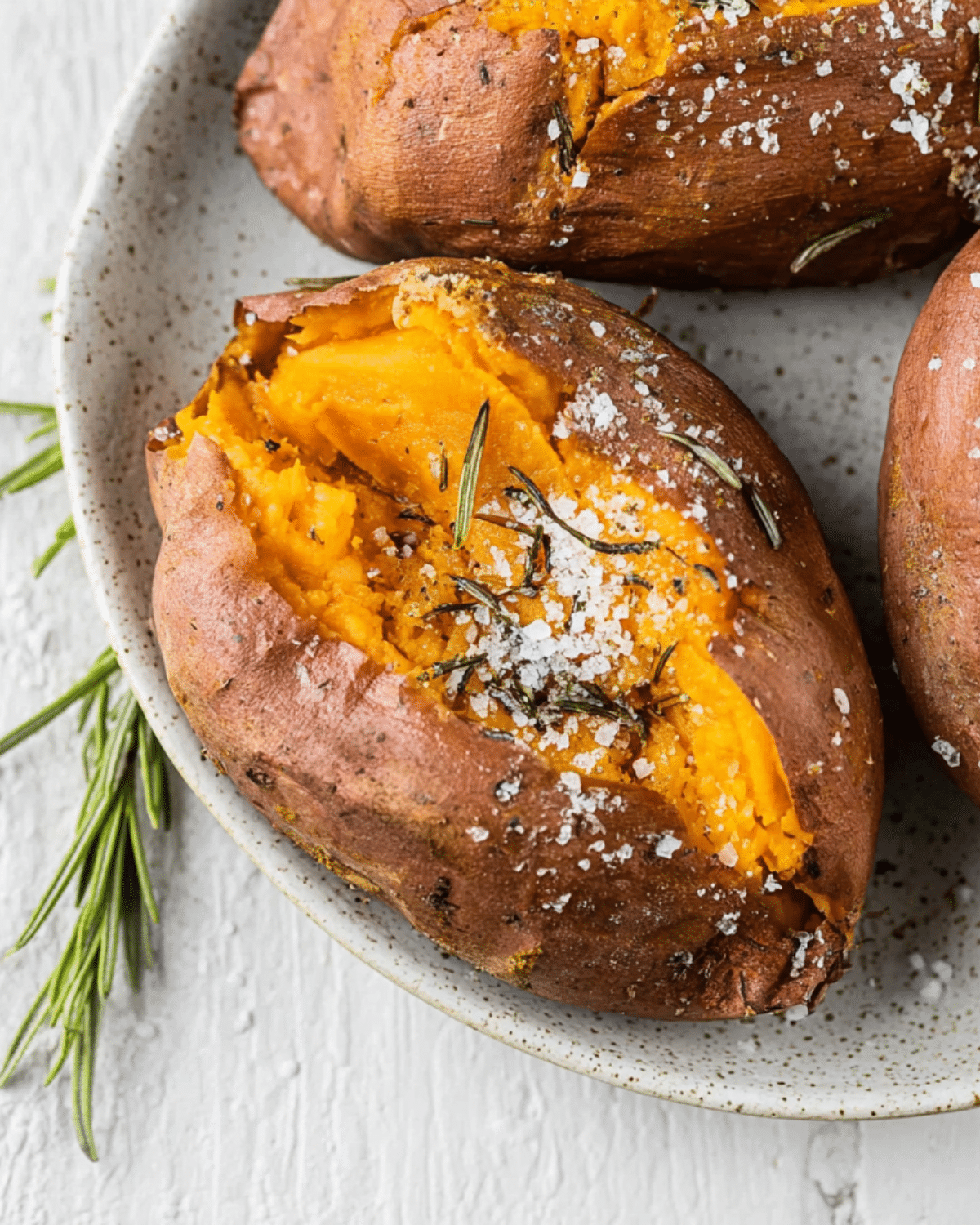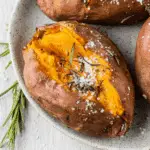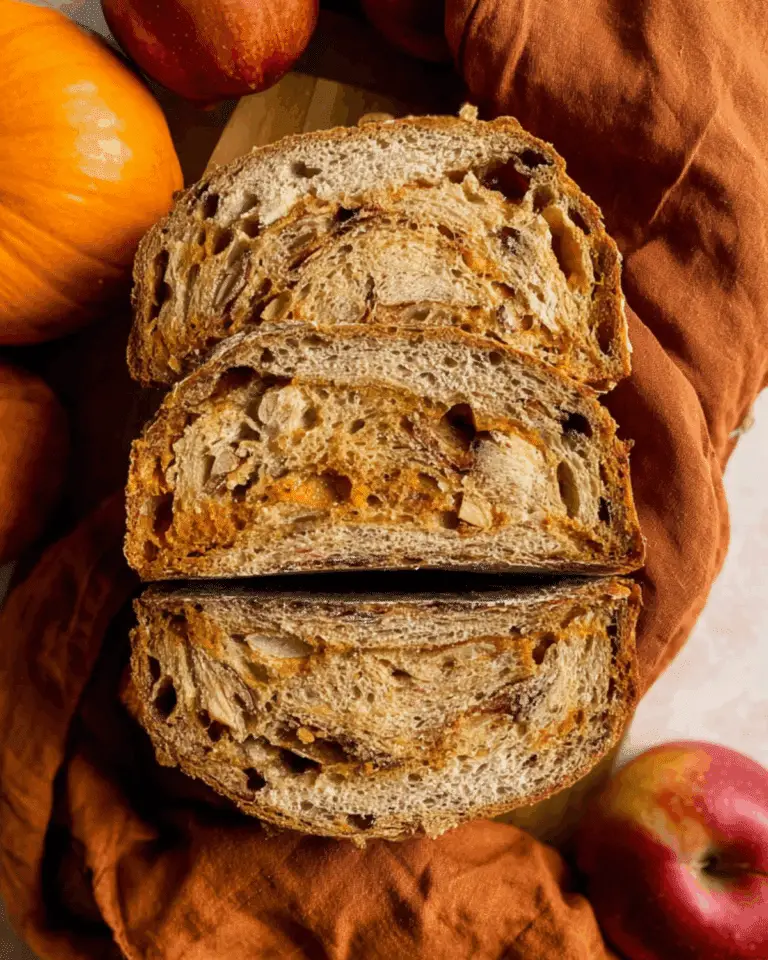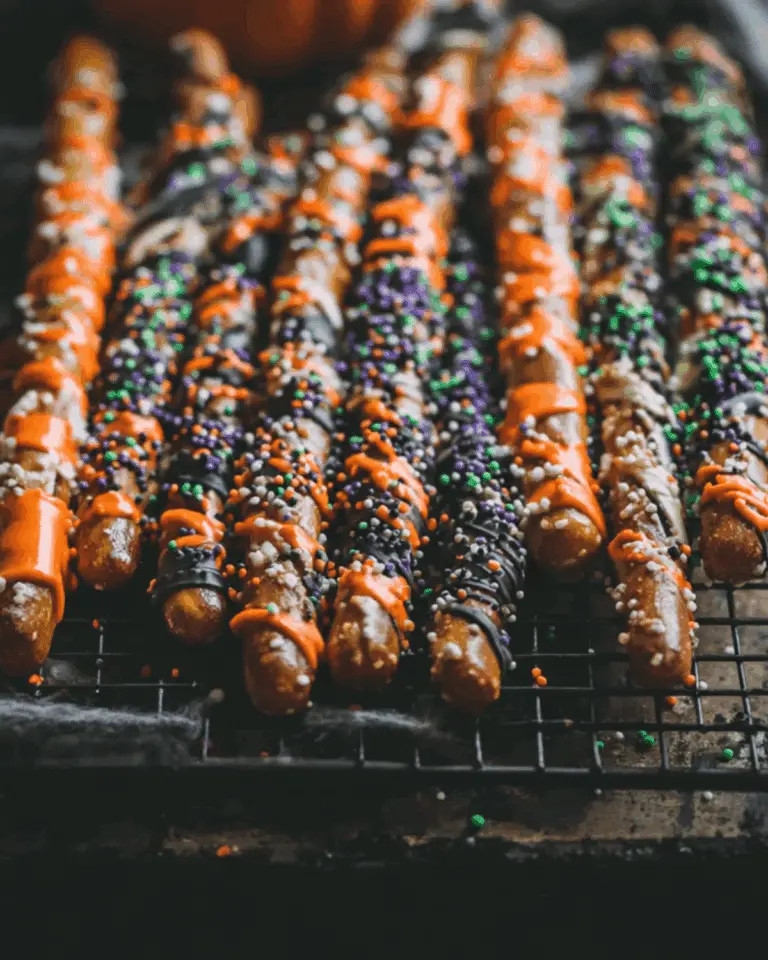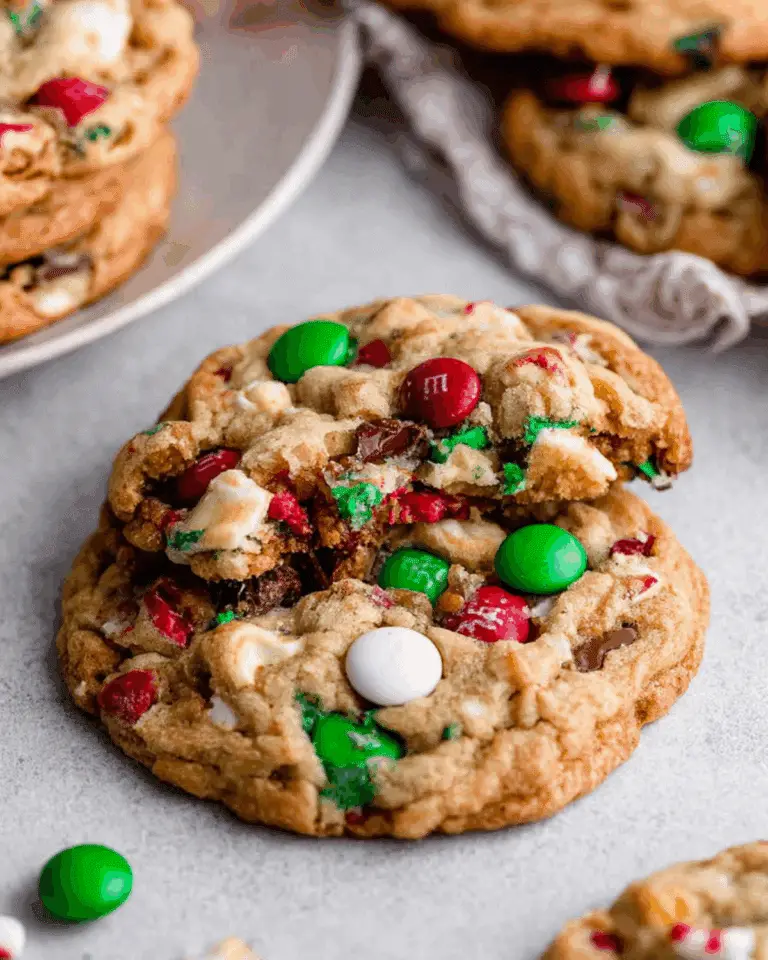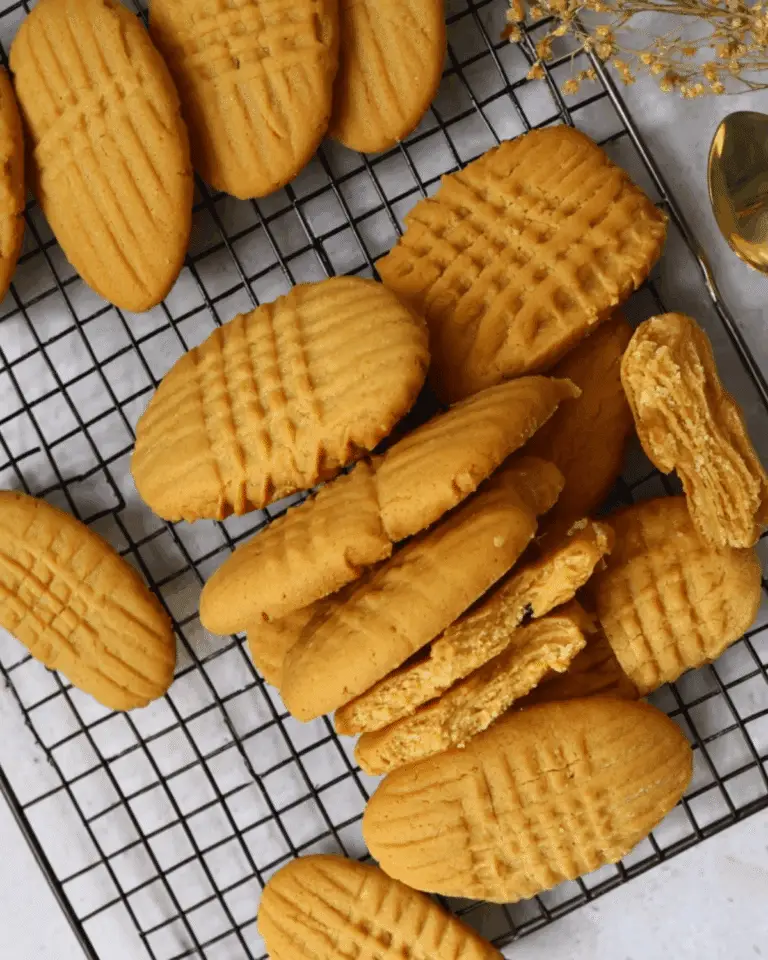Looking for the perfect baked sweet potato that’s soft on the inside and irresistibly crispy on the outside? You’ve landed in the right place. Whether you’re prepping for a holiday feast or simply need a nutrient-rich side for dinner, mastering how to bake sweet potatoes can transform your meal game. This guide covers everything—from choosing the right spuds to nailing the oven technique, plus smart toppings, storage tricks, and common mistakes to avoid.
Don’t miss our sweet potato casserole recipe for another hearty and flavorful way to enjoy this superfood.
Let’s start by understanding why this humble root vegetable deserves a spot in every kitchen.
JUMP TO
Table of Contents
Why Baked Sweet Potatoes Are a Must in Every Kitchen
Baked sweet potatoes are more than just a trendy side dish—they’re a nutritional powerhouse and a meal-prep hero.
Health Benefits of Sweet Potatoes
Sweet potatoes are packed with essential nutrients. Just one medium sweet potato delivers over 400% of your daily Vitamin A needs. They’re also rich in:
- Vitamin C
- Potassium
- Iron
- Dietary fiber
Their high fiber content helps you feel full longer, making them ideal for weight management and digestive health. Plus, they’re naturally gluten-free and low in fat, making them suitable for nearly any diet.
Why Baking is the Best Cooking Method
Compared to boiling or frying, baking sweet potatoes enhances their natural sweetness and retains most of their nutrients. High dry heat breaks down the starches into simple sugars, giving that caramelized flavor and ultra-creamy texture inside. Roasting without foil also gives the skins a crisp finish, which adds a whole new layer of flavor and mouthfeel.
Looking for inspiration? Try our crispy Hasselback potatoes as another oven-baked veggie favorite.
Differences Between Yams and Sweet Potatoes
They’re not the same—and knowing the difference matters.
- Sweet potatoes have a smooth skin and vibrant flesh (orange, purple, or white), and are naturally sweet.
- Yams, on the other hand, have rough, bark-like skin and are starchy with a neutral flavor.
In most U.S. grocery stores, what’s labeled as “yam” is actually a sweet potato. So for the purpose of this recipe, make sure you grab the real orange-fleshed sweet potatoes for best results.
How to Choose and Prepare Sweet Potatoes for Baking
Getting that perfect bake starts with the right choice and prep.
What Type of Sweet Potatoes Bake Best
Orange-fleshed sweet potatoes (like Garnet or Jewel) are your best bet. They bake into a fluffy, moist, and caramelized texture. White and purple varieties are drier and starchier, which can still work—but they won’t yield that melt-in-your-mouth softness unless adjusted.
When choosing:
- Pick medium-sized potatoes with similar thickness
- Avoid bruises or soft spots
- Go for smooth, tight skin
Discover great ideas like our sweet potato biscuits dessert recipe to explore different sweet potato uses.
To Peel or Not to Peel
Skip the peeling—at least for baking. The skin adds texture and helps hold everything together. Not to mention, it’s packed with fiber and nutrients. A simple scrub with water and a brush is all they need before baking.
How to Prep for Even Baking
Even baking starts with consistency. Here’s how to prep right:
- Scrub and rinse under cold water
- Trim off dark spots or blemishes
- Pat dry completely
- Rub with a light coat of olive oil or avocado oil
- Sprinkle with sea salt for flavor
Check out our loaded scalloped potatoes recipe if you love creamy and comforting side dishes.
Choosing sweet potatoes of equal size ensures they all finish baking at the same time—no surprises, no raw middles.
The Perfect Baked Sweet Potato Recipe
This recipe is as simple as it is foolproof, but a few tricks will guarantee restaurant-level results every time.
Ingredients and Tools You’ll Need
| Ingredient | Amount | Notes |
|---|---|---|
| Sweet potatoes | 4 medium-sized | Unpeeled, scrubbed |
| Olive oil | 1 tbsp | Or avocado oil |
| Sea salt | To taste | Optional: add a pinch of black pepper |
| Parchment paper | 1 sheet | For easy cleanup and crispy skins |
Essential tools:
- Baking tray with rim
- Oven preheated to 400°F
- Optional: silicone brush for oil
Step-by-Step Baking Instructions (With Time Chart)
- Preheat oven to 400°F (204°C)
- Prepare potatoes – Wash, dry, and lightly oil
- Arrange on parchment-lined tray
- Bake for 40 to 90 minutes, depending on size
- Flip halfway for even skin crisping
| Potato Thickness | Estimated Time |
|---|---|
| < 3 inches | 40–50 mins |
| 3–4 inches | 60–75 mins |
| > 4 inches | Up to 90 mins |
No need to poke holes—this retains moisture and enhances internal creaminess.
Don’t miss our slow cooker cheesy potatoes for an effortless alternative.
Tips for Testing Doneness and Texture
- Perform the poke test with your fingers or fork—skin should puff and potato should yield easily
- The inside should “squish” when gently pressed
- If the skin peels away without resistance, it’s ready
- Slight caramelized leakage means peak sweetness inside
Looking for an elegant veggie option? Check out our baked acorn squash recipe for more ideas.
Common Mistakes When Baking Sweet Potatoes
Even though the recipe is simple, a few common missteps can make the difference between dry disappointment and silky perfection.
Why Your Potatoes Turn Out Soggy
Soggy sweet potatoes usually mean too much trapped moisture. The biggest culprits?
- Wrapping in foil – This traps steam and prevents the skin from crisping.
- Overcrowding the pan – If you’re baking several at once, ensure space between them. Overlapping causes steam buildup, not roasting.
- Skipping the drying step – Water on the skin will cause steaming rather than dry heat baking.
Avoid these and you’ll get fluffy interiors with crispy skins every time.
Should You Wrap Them in Foil or Not
Many recipes suggest foil, but here’s the truth: don’t do it.
Wrapping in foil:
- Prevents crisping
- Steams the potato instead of roasting it
- Makes cleanup harder when sugary drips leak
Instead, bake directly on parchment paper over a rimmed baking tray. The result? A naturally caramelized, intensely flavorful potato with edible skin.
Overbaking vs. Underbaking
- Underbaking leads to a firm, chalky center—not ideal. If you can’t easily pierce through it with a fork, give it more time.
- Overbaking, on the other hand, can dry out the flesh unless you’ve coated it well with oil and baked at the correct temp (400ºF).
Pro tip: If in doubt, bake longer. The flesh should slightly collapse and caramelize on the baking tray for peak flavor.
Check out sweet potato casserole for another delicious way to use baked sweet potatoes as a base.
Delicious Toppings & Serving Suggestions
Baked sweet potatoes are like a blank canvas. Whether you love savory or sweet, the topping options are endless.
Savory Toppings: Protein-Packed Ideas
Amp up your baked potato with toppings that make it a satisfying full meal:
- Shredded rotisserie chicken + spinach + hummus
- Ground turkey + black beans + avocado slices
- Greek yogurt + smoked salmon + capers
- Scrambled eggs + hot sauce for breakfast vibes
- Feta cheese + chopped tomatoes + olive oil drizzle
These high-protein options are great for meal prep or a post-workout dinner.
Learn more about building meals with sides like scalloped potatoes.
Sweet Toppings: Cinnamon, Nut Butter & More
Craving dessert? Sweet potatoes naturally lean sweet, so they pair well with:
- Cinnamon + maple syrup + walnuts
- Almond butter + banana slices
- Brown sugar + mini marshmallows
- Chia pudding + pecans
- Coconut yogurt + blueberries + a pinch of nutmeg
These toppings are excellent for breakfast or a healthier dessert option.
How to Turn Them Into a Full Meal
Slice open the potato and fluff with a fork. Add:
- A greens base (like spinach, arugula, kale)
- Your protein (beans, eggs, meat, or tofu)
- Healthy fats (avocado, tahini, olive oil)
- A bold topping (salsa, hot sauce, pesto)
Boom—complete meal in under 5 minutes.
Don’t miss our sweet potato biscuits recipe for a creative sweet side idea.
Meal Prep, Storage & Reheating Tips
Want to enjoy baked sweet potatoes all week long? Here’s how to keep them fresh and flavorful.
How to Store Baked Sweet Potatoes
Let them cool completely, then:
- Store whole or halved in airtight containers
- Refrigerate up to 5 days
- Keep the skin on to retain moisture
Avoid freezing whole baked sweet potatoes—they become mushy and watery when thawed.
Best Ways to Reheat Without Drying Them
| Method | Time | Tips |
|---|---|---|
| Oven | 20 mins @ 425°F | Wrap in foil, cut in half for speed |
| Microwave | 2–4 mins | Use a microwave-safe cover |
| Toaster Oven | 10–12 mins | Ideal for crispy skins |
Avoid reheating uncovered in the oven unless you like extra-roasted skins.
Freezer Dos and Don’ts
❌ Don’t freeze whole baked sweet potatoes.
✅ Do freeze mashed sweet potato flesh in containers or bags.
Use within 2–3 months for best taste and texture.
Discover great ideas like our baked acorn squash recipe to round out your fall veggie prep.
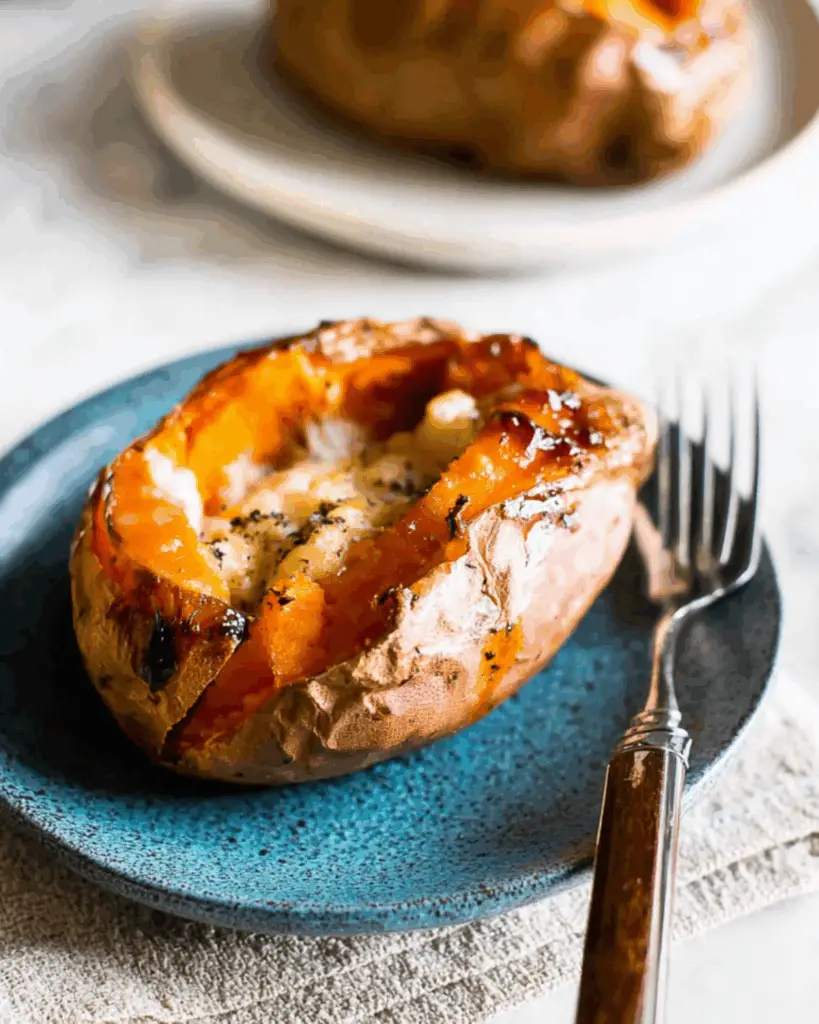
FAQ – Everything You’re Wondering About Baked Sweet Potatoes
What’s the Best Temperature to Bake a Sweet Potato?
The ideal temperature is 400ºF (204ºC). This allows the inside to slowly break down, becoming creamy and sweet while the outside crisps up beautifully. Going lower (like 350ºF) will take too long, while 425ºF might rush the process and dry them out.
Do You Need to Poke Holes Before Baking Sweet Potatoes?
Contrary to popular belief, you don’t need to poke holes when baking sweet potatoes. Skipping this step helps the potato retain more moisture and improves the creamy texture. Just make sure you dry them well and oil the skins before baking.
Can I Microwave Instead of Bake Sweet Potatoes?
Yes, but the texture won’t be the same. Microwaving is faster, taking about 6–10 minutes depending on size. However, you’ll lose that caramelized flavor and crispy skin. It’s a solid backup if you’re short on time.
Are Baked Sweet Potatoes Good for Weight Loss?
Absolutely. They’re rich in fiber and low in fat, helping to keep you full longer. With only around 140 calories per medium potato, baked sweet potatoes are a smart carb choice for balanced meals.
Conclusion – Why You’ll Love These Baked Sweet Potatoes
Baked sweet potatoes are easy, nourishing, and versatile. They’re perfect for busy weeknights, holiday dinners, and everything in between. With their naturally sweet taste, creamy flesh, and crispy skin, they can be topped or stuffed to suit any craving—sweet or savory.
Whether you’re a beginner or a seasoned cook, this guide helps you bake sweet potatoes to perfection every single time.
Don’t miss our crispy Hasselback potato recipe if you’re into oven-baked comfort food with a gourmet twist.
PrintBaked Sweet Potato
This baked sweet potato recipe delivers soft, creamy interiors with crispy skins using just three ingredients. Perfect as a healthy, gluten-free side or a base for hearty toppings.
- Prep Time: 5 minutes
- Cook Time: 1 hour 20 minutes
- Total Time: 1 hour 25 minutes
- Yield: 4 servings
- Category: Side Dish
- Method: Baking
- Cuisine: American
- Diet: Gluten Free
Ingredients
- 4 medium-sized sweet potatoes
- 1 tablespoon olive oil (or avocado oil)
- Sea salt, to taste
- Parchment paper (for baking tray)
Instructions
- Preheat oven to 400°F (204°C).
- Wash the sweet potatoes thoroughly and pat them dry.
- Brush each potato with olive oil and sprinkle with sea salt.
- Place sweet potatoes on a parchment-lined, rimmed baking tray.
- Bake for 40–90 minutes depending on size, flipping halfway for even crisping.
- Check doneness with a poke test; skin should puff and yield to gentle pressure.
- Remove from oven and serve hot with your favorite toppings.
Notes
- Do not wrap sweet potatoes in foil; it traps steam and makes the skin soggy.
- No need to poke holes in the skin before baking.
- Select potatoes of similar size for even baking.
- Flip halfway through baking for even skin crisping.
- Store leftovers in the fridge for up to 5 days.
Nutrition
- Serving Size: 1 medium sweet potato
- Calories: 142
- Sugar: 5g
- Sodium: 71mg
- Fat: 3g
- Saturated Fat: 0.5g
- Unsaturated Fat: 2.5g
- Trans Fat: 0g
- Carbohydrates: 26g
- Fiber: 3g
- Protein: 2g
- Cholesterol: 0mg

